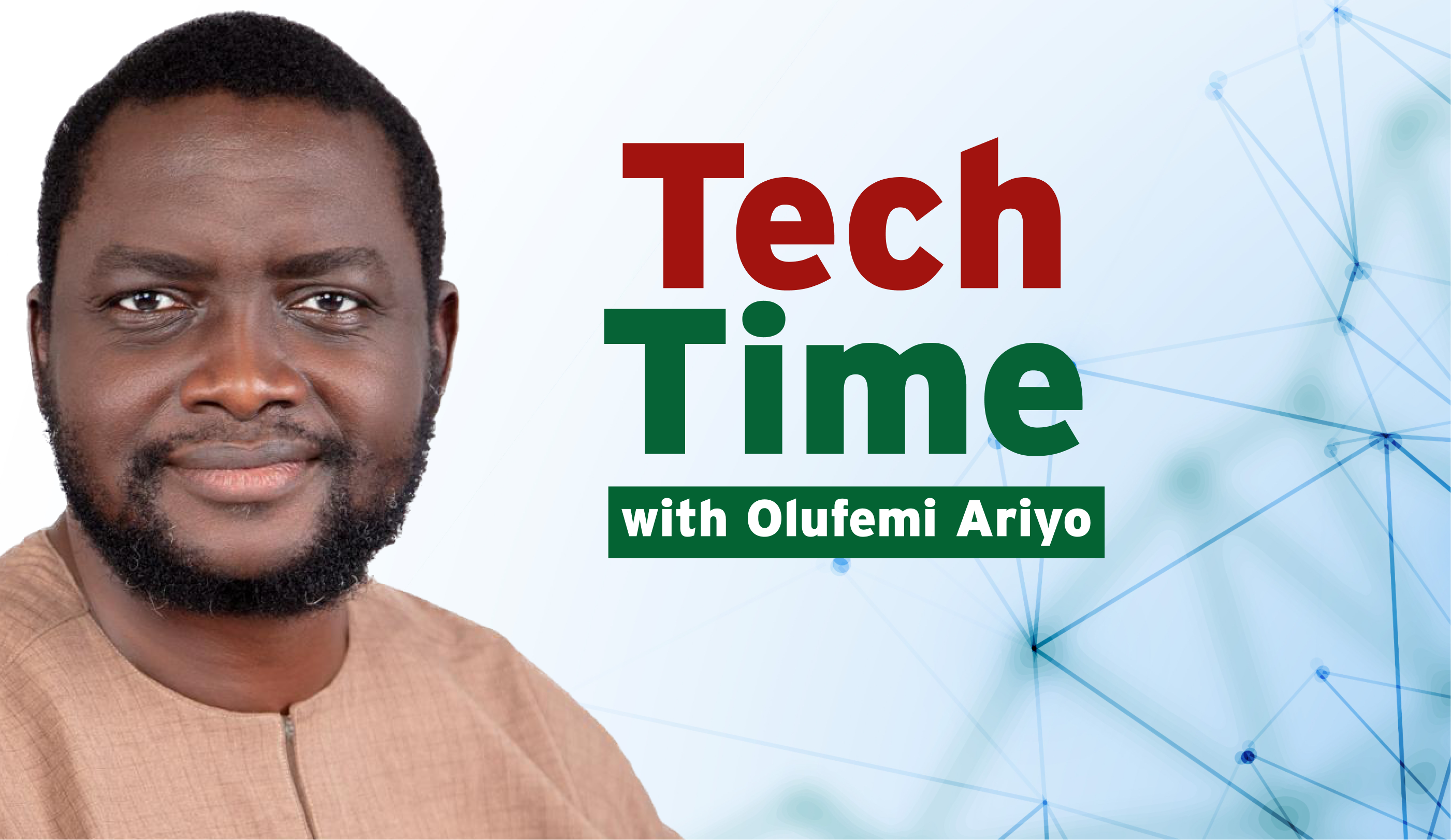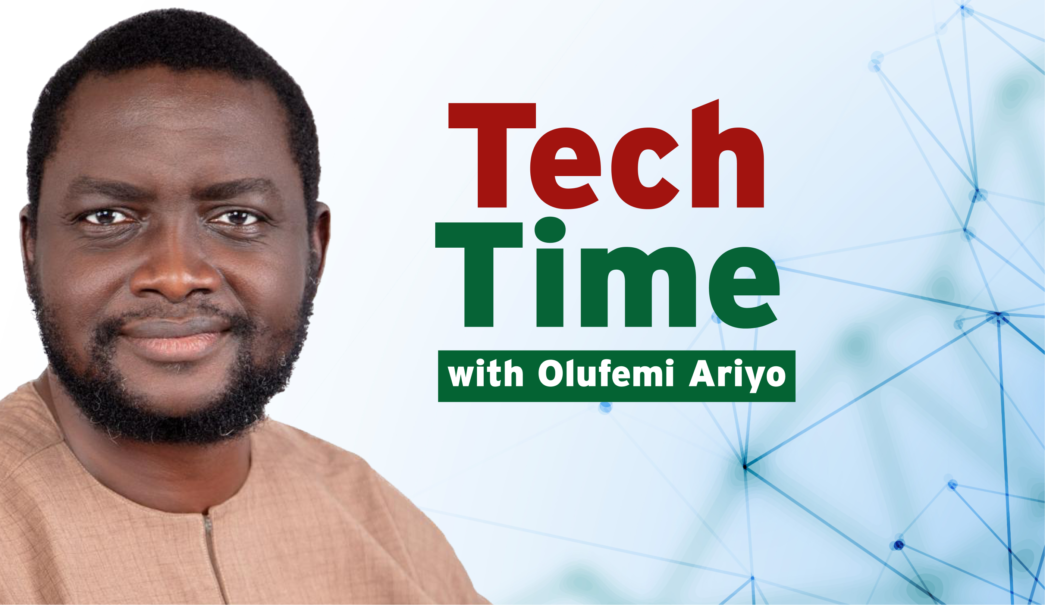The great thing about fact-based decisions is that they overrule the tendency to be influenced by emotion. Except when you have a sense of love and responsibility for the outcome, says Amazon’s Jeff Bezos. This topic considers the intersection of technology, love, and national development. It discusses how technological advancements, when driven by the values of empathy, care, and community-focused love, can uplift economies, societies, and infrastructures in underdeveloped countries.
The key theme is that when technology is used with a sense of responsibility, equity, and compassion, it has the potential to spark transformational change. While technology is often seen through the lens of efficiency, profit, and progress, this perspective shifts by emphasising its human-centric potential – using tech to serve societal needs, address systemic inequalities, and promote economic growth. In underdeveloped countries, where resources may be scarce but the potential for growth is immense, love-driven technology prioritises the upliftment of marginalised populations, ensuring that no one is left behind. Whether through expanding access to education, improving healthcare systems, providing financial inclusion, or creating sustainable energy solutions, technology grounded in compassion can become a tool for social good. The underlying principle is that, when technology is deployed with a sense of responsibility and equity, it can catalyse transformational change, helping to break the cycle of poverty, bridge social divides, and build a more inclusive, prosperous future for all. By aligning technological progress with a collective sense of care and mutual respect, underdeveloped countries can not only catch up with the developed world but also create innovative, locally-driven solutions to their unique challenges. Ultimately, love-driven technology is about harnessing innovation to create systems that serve people and promote long-term, sustainable development.
A. Introduction:
The concept of “love-driven technology” has emerged as a unique force with the potential to affect the way societies approach progress and development. Love-driven technology refers to innovations and technological advancements that are guided by empathy, social good, and a deep-rooted desire to improve the lives of individuals and communities. Unlike the traditional view of technology as a tool for maximising profits, gaining market dominance, or enhancing corporate competition, love-driven technology prioritises the collective well-being of society. It encourages a mindset that technology should be leveraged not just to achieve personal or organisational success, but to foster inclusivity, address systemic inequalities, and meet the basic needs of the most vulnerable populations. This shift in perspective is especially critical in underdeveloped or developing countries, where access to resources and opportunities may be limited but where the potential for growth and transformation is immense.
Advertisement
Moreover, this mindset shift is crucial in rethinking how technology is applied on a global scale. Traditionally, technology has often been seen as an instrument to fuel competition, maximise profit, or increase power, leaving many underserved communities behind. However, as we move toward a more socially-conscious world, the focus must shift from technology as a mere commodity to technology as a tool for social development and equality. The real promise of technology lies not in its ability to create wealth for a few, but in its capacity to uplift entire societies. Love-driven technology places human dignity and care at its core, aiming to create solutions that address pressing social challenges such as poverty, inequality, access to healthcare, education, and clean energy. By prioritising empathy and collaboration, this approach challenges the status quo and offers a powerful way forward, where technology serves the needs of all, not just the privileged few. This shift is vital for achieving long-term, sustainable development in underdeveloped countries, helping them leapfrog traditional barriers and create systems that nurture equity, opportunity, and shared prosperity.
Also, technology plays a pivotal role in driving economic development and powering societal progress by transforming key sectors such as infrastructure, education, healthcare, and poverty alleviation. It has the ability to create new economic opportunities, streamline processes, and provide solutions to long-standing challenges. For example, mobile payment platforms like M-Pesa in Kenya have brought new narratives to financial inclusion in Sub-Saharan Africa by providing people in remote, underserved areas with access to banking and financial services via mobile phones. This has empowered individuals to engage in economic activities, save money, and send remittances, driving economic growth in regions previously excluded from traditional banking systems. Similarly, the proliferation of internet access and connectivity has democratised education, enabling students in rural communities to access learning materials and online courses – from a smart device. In healthcare, technology has enhanced the delivery of services through telemedicine, mobile health apps, and digital records, improving access to quality care in areas lacking medical infrastructure. Besides, technology has played an essential role in poverty alleviation by improving access to information and market opportunities, allowing people to participate in global economies and break free from the cycle of poverty. Ultimately, the power of accessibility, connectivity, and information sharing has the potential to uplift entire communities, enabling individuals to overcome barriers and achieve better standards of living. The onus lies with entrepreneurs to seek ways to change their thinking and create a new world, while paying attention to love-driven tech.
B. Case Study: How Love-Driven Tech Models Have Benefited Undeveloped Nations
Advertisement
Telemedicine: Expanding Healthcare Access Through Empathy and Innovation
Telemedicine is a prime example of how love-driven technology can radically improve access to healthcare in underserved regions. In countries like India, where rural areas often lack access to basic medical services, telemedicine has emerged as a game-changer. Initiatives that leverage mobile phones and internet connectivity allow healthcare professionals to deliver vital health advice, diagnosis, and even remote consultations to patients in remote villages without requiring them to travel long distances to urban centers. This shift is not merely a technological advancement; it reflects an empathetic approach to healthcare, driven by the desire to ensure that individuals, regardless of their location or economic status, have access to quality medical support. When love begins that thought process, innovative ideas follow. By removing geographical barriers, telemedicine improves patient outcomes, reduces the strain on urban hospitals, and ultimately ensures more equitable healthcare access.
Education: Empowering Minds with Free, Accessible Learning Resources
In the education space, love-driven tech has also made major strides in levelling the playing field for individuals in underdeveloped countries. Platforms like Khan Academy and Duolingo are prime examples of how technology can be harnessed to offer free educational resources, bridging the educational divide between the privileged and those in remote, underserved communities. These platforms operate on the belief that education is a fundamental human right, not a privilege reserved for the affluent. By providing free access to quality courses in subjects ranging from mathematics to languages, they empower students from all backgrounds to gain the skills and knowledge necessary to improve their lives. For instance, in many African countries, where access to formal education can be limited due to cost or location, platforms like these offer an invaluable opportunity to learn at one’s own pace, thus making education ubiquitous and giving millions of people the tools to break free from the cycle of poverty.
Clean Energy: Empowering Communities with Sustainable Solutions
Access to reliable and affordable energy is one of the most pressing challenges in many underdeveloped nations. In areas of Sub-Saharan Africa and South Asia, where millions of people live without access to the grid, companies like d.light and M-KOPA have brought solar power solutions that provide off-grid communities with clean, sustainable energy. These innovations are driven by a deep sense of empathy for people living in energy poverty, and they focus on affordability and accessibility. By offering pay-as-you-go models, these companies have made solar-powered lighting and energy systems available to low-income households and small businesses, empowering individuals to improve their livelihoods. Solar energy has transformed daily life by providing reliable lighting for studying, working, and running businesses, while also being a catalyst for economic growth. With access to clean energy, communities can thrive, small businesses can expand, and children can study at night, which improves educational outcomes. These decentralised, community-based solutions are a perfect example of how love-driven technology (focused on human well-being rather than profit maximisation) can accelerate development and elevate entire communities out of poverty.
Advertisement
C. The Power of Community-Focused Tech Solutions
Crowdsourcing and Crowdfunding: Empowering Communities through Collective Action
Crowdsourcing and crowdfunding platforms have emerged as powerful tools for community-driven development, particularly in developing nations where access to traditional funding sources can be limited. Platforms like GoFundMe and Kickstarter have enabled individuals, nonprofits, and local businesses to raise funds for projects ranging from infrastructure development to social initiatives. In many parts of the world, communities have successfully used these platforms to fund critical healthcare projects, build schools, provide clean water, or support small local businesses. By tapping into the global network of supporters, these platforms create a sense of solidarity and shared responsibility, allowing individuals to contribute to causes they care about, no matter their geographical location. The power of collective action, amplified by technology, has proven to be a game-changer for grassroots movements and small-scale development projects in areas that would otherwise struggle to access capital or resources. Just as in agreement with Elon Musk, “I think it is possible for ordinary people to choose to be extraordinary.” The youth, who often feel alone and powerless could leverage the enormous power these platforms command.
Digital Cooperatives: Decentralised Economies for Collective Wealth Creation
Another transformative community-focused tech solution lies in the concept of digital cooperatives, which use blockchain, cryptocurrency, and other decentralising technologies to create cooperative economies. In these systems, local communities can pool their resources, trade, and generate collective wealth without relying on traditional financial systems that may exclude or disadvantage them. Blockchain technology, for example, provides a transparent, secure, and efficient way to track transactions and create smart contracts that govern collective agreements. Digital cooperatives enable communities to take control of their own economic destinies by allowing them to build decentralised networks that promote trust and fairness. In developing nations, where traditional banking infrastructure is often lacking or inaccessible, these digital cooperatives offer a unique opportunity for economic empowerment. They can promote sustainable growth, enable people to invest in local businesses, and ensure that wealth generated within the community stays within the community. By breaking down financial barriers and removing intermediaries, digital cooperatives empower individuals to engage in a more inclusive and equitable form of economic participation.
D. The Role of Social Media & Digital Activism
Advertisement
Social Media as a Tool for Social Justice and Accountability
Social media has become a powerful platform for digital activism, offering a space for individuals and groups to voice their concerns, mobilise communities, and demand social justice. In countries like Nigeria, India, and Brazil, social media has played a vital role in amplifying grassroots movements and advocating for systemic change. Movements like #BringBackOurGirls and #EndSARS have used the digital sphere to raise awareness and hold governments accountable for their actions. These movements have successfully rallied both local and global support, placing pressure on authorities to address human rights violations, combat corruption, and improve security. Social media’s ability to connect individuals across borders has made it a powerful tool for creating solidarity and spurring action in real-time. By providing a platform for marginalised voices, social media has taken activism to a different level, allowing citizens to advocate for justice and equality in ways that were previously unimaginable.
Uniting for National Development through Digital Activism
In addition to social justice, social media has also been a catalyst for movements advocating for national development and environmental change. Campaigns like #FridaysForFuture, driven by climate activist Greta Thunberg, have shown how social media can unite people across the world in support of environmental sustainability. This movement, along with others, has helped shift the conversation about climate change from abstract policy discussions to urgent grassroots action, urging leaders to prioritise environmental protection and implement policies for a more sustainable future. In many developing countries, these digital movements have empowered local entrepreneurs and activists, offering a platform to showcase their work and gain visibility on a global stage. The role of social media in digital activism is not just about raising awareness – it is about mobilising action, fostering collaboration, and creating tangible changes in society. Through hashtags, viral campaigns, and online petitions, individuals have been able to use social media as a tool for both social justice and sustainable development, creating a more engaged and informed citizenry. It is high time Nigerians began the #LGsDoMore campaign in an era of Local Government autonomy.
Advertisement
E. How Love-Driven Tech Can Address Structural Issues
Financial Inclusion and Empowerment through Love-Driven Tech
One of the most notable ways love-driven technology can address structural issues in developing countries is by promoting financial inclusion. In regions where traditional banking infrastructure is limited or inaccessible, fintech solutions like Currex, PayPal, and Stripe have influenced access to essential financial services. These platforms allow individuals and businesses in underserved areas to access banking services, make global transactions, and manage their finances with ease, without the need for physical banks or credit systems. For small business owners, this means they can accept payments from international customers, expand their reach, and increase revenue. By providing simple, reliable, and affordable financial services, fintech platforms bridge the gap between the unbanked and the global economy, empowering individuals and entrepreneurs to participate in the global marketplace, irrespective of their location.
Advertisement
F. Revolutionising Agriculture with Technology for Food Security
Another critical sector where love-driven tech can address structural challenges is agriculture, which is the backbone of many developing economies. By using technology to connect smallholder farmers to essential tools, real-time market data, and funding opportunities, tech solutions can significantly improve agricultural productivity and livelihoods. Platforms like FarmCrowdy in Nigeria are changing the agricultural landscape by facilitating crowdfunding for farm projects, enabling farmers to access the capital they need to expand and modernise their operations. More of such initiatives need to come up to support centralised aggregation of farm produce, processed food, transportation, access to markets, and funding. In addition to financial support, technology also helps farmers access information on crop management, weather patterns, and market prices, allowing them to make better-informed decisions. This approach improves food security and empowers farmers to increase their yield and profitability, driving economic growth in rural communities. With the right technological tools, smallholder farmers can become more competitive and resilient, creating a sustainable agricultural ecosystem that addresses both local and global food needs.
F. A Vision for the Future: How Technology Can Create a Global Community
Advertisement
As emerging technologies like Artificial Intelligence (AI), 5G, and blockchain continue to advance, they hold immense potential to create more inclusive and equitable systems in underdeveloped countries. These technologies have the power to transcend geographical barriers, enabling better access to education, healthcare, business opportunities, and governance. In the future, AI could provide personalised learning experiences for students in remote areas, while blockchain could offer secure and transparent financial transactions, fostering trust and efficiency in developing economies. 5G connectivity would ensure that even the most isolated communities have access to high-speed internet, facilitating everything from e-commerce to telemedicine. As these technologies evolve, they promise to break down traditional barriers and open up new opportunities for growth and development in regions previously left behind.
Indeed, love-driven technology emphasises fairness, equity, and the idea that everyone should benefit from the progress that technology enables. In this vision of the future, technology is not just about serving the privileged few but lifting up those who are most vulnerable, ensuring that no one is left behind. This means designing solutions that prioritise social good over profit, creating systems that serve the common good and promote the well-being of all people, regardless of their socio-economic status. Whether it is providing accessible healthcare through telemedicine, fostering financial inclusion via mobile banking, or improving access to education through online platforms, love-driven tech ensures that the benefits of progress are distributed fairly, leading to sustainable development that serves the collective needs of society.
To truly achieve a globally inclusive future, it is necessary to nurture a mindset of solidarity between the developed and developing world. Rather than the traditional model where the developed world exports technology to underdeveloped countries (a dump-down approach), the future should focus on collaboration. The developed world should partner with developing countries, co-creating solutions that reflect local needs, cultures, and challenges (for local relevance and applicability). This collaboration should be driven by shared goals (promoting equity, sustainability, and global prosperity). In this vision, technology is not a tool of dominance, but one of empowerment, where every community has a seat at the table and plays a role in shaping the future. By working together, we can build a world where technology is a unifying force, lifting all nations towards shared prosperity.
In conclusion, the fusion of technology, love, and innovation holds the key to creating a future where sustainable, inclusive growth is not only possible but inevitable. By leveraging technology to solve human-centred problems (focusing on empathy, equity, and shared progress rather than pure profit) nations can leapfrog traditional barriers to development and create more resilient, equitable societies. This approach empowers communities, transforms economies, and builds bridges where there were once divides. As we look to the future, it is clear that technology has the potential to do more than just connect us; it can unite us in our collective mission to uplift each other and turn the challenges of today into the opportunities of tomorrow. In a world where technology connects us more than ever, let us use that connection to lift each other up, nurture compassion, and build a future that is driven not only by innovation but by love.
Thank you for the investment in time, and I am open to discussions on proven approaches to develop underdeveloped Nations. To be alerted each time I create a new post, follow my Medium: https://medium.com/@roariyo and LinkedIn: https://www.linkedin.com/in/olufemiariyo/ or send an email to [email protected]
Add a comment












